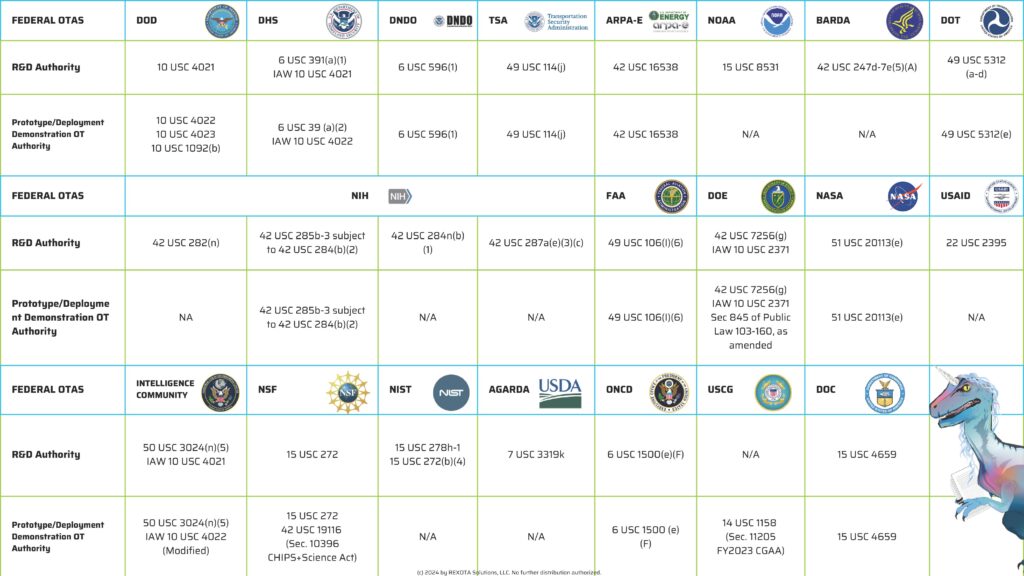The government issues a Request for White Paper (RFWP) (an instrument equivalent to a Request for Proposal or Quotes [RFP or RFQ]). Firms receive the RFWP, develop a response, and submit it to the consortium management firm, which then submits it to the federal government. The federal government selects an awardee and executes a contract with that member (through the consortium management firm). An OT agreement can be FAR-based, subject, sole-sourced, or executed under a particular vehicle.
Broad Agency Announcements (BAA) and Commercial Solutions Openings (CSO) are currently the most common solicitation methods used in the DOD.
BAAs are used to obtain proposals for basic and applied research and development to advance or evaluate cutting-edge technologies unrelated to a specific system or hardware requirement. CSOs are a competitive process to obtain solutions or new capabilities that fulfill requirements, close capability gaps, or provide potential technological advances.
CSO procedures are similar to those for BAAs, except that a CSO can be used to acquire innovative commercial items, technologies, or services that directly meet program requirements. In contrast, BAAs are restricted to basic and applied research.
Other agencies sometimes use different names and titles for their solicitation methods and tend to post them on their website versus always having to post through SAM.gov. So, agencies looking for these opportunities will have to do some hunting. If this sounds like a barrier, it could be for some. For others who don’t have a SAM.gov account, this is a better method. Another consolidated way the industry can use is through consortia.
Wait a minute…what’s a consortium?
You must know about consortia if you’re trying to join the wide world of federal OT agreements.
An OTA consortium is a business relationship or “enterprise partnership” between a government sponsor and a “lead” organization – a consortium management firm – that agrees to participate under a binding contractual instrument (i.e., a standard rule set). It is important to note that the government counterpart can either be a single sponsor or can consist of multiple federal sponsors coordinated through one lead federal agency.
The consortium management firm (i.e., the lead organization) offers the government sponsor (aka their customer) a single point of contracting. It is responsible for acting as an “honest broker” that provides the proper support in acquiring deliverables for a cut of the deal.
At its core, an OTA consortium is a well-organized (and generally non-profit) club. Anyone can join the consortium—often for a nominal annual fee of around $500 (some go higher). Consortium members usually consist of for-profit, not-for-profit, non-profit entities or universities and other academic research organizations competent in a specific technical domain of interest.
Each consortium acts superficially as an outsourced procurement shop with a twist. The consortium management firm has responsibilities such as:
- Communicating the needs of its federal customers to its members
- Hosting events and seminars
- Issuing RFWPs
Note: You do not need to be part of a consortium to receive an OT agreement. But, if you’re a traditional government contractor, you must meet additional requirements. Namely, you must demonstrate that a non-traditional contractor is participating to a “significant extent” and that there is a cost-share agreement. At the same time, the acquisition executive must provide a written demonstration of the exceptional circumstances justifying the use of an OTA.

